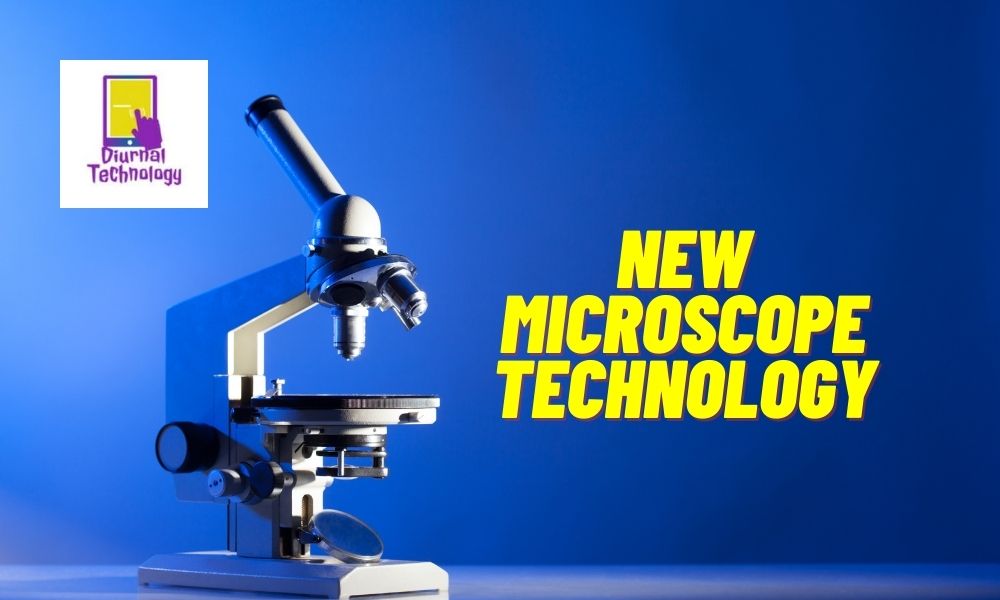The new microscope technology is a revolution in the field of microscopy. It has the potential to provide unprecedented levels of detail and resolution, making it possible to see things that have never been seen before. This new technology is called super-resolution microscopy, and it works by using special techniques to greatly improve the resolving power of a microscope.
Super-resolution microscopes are able to resolve features that are much smaller than what is possible with traditional microscopes, and this allows for the observation of extremely small details.
We Upgraded Our Microscope… Again!
The new year always brings new technology, and this year is no different. One of the most exciting pieces of new technology is a microscope that can take 3D images of cells. This could be a game changer for science, as it will allow researchers to see cells in a whole new way.
This microscope uses a technique called light sheet microscopy, which allows for 3D imaging without damaging the cells. This is a major breakthrough, as previous methods of 3D microscopy were very invasive and often destroyed the cells being studied. With this new technology, scientists will be able to study cell structure and function in unprecedented detail.
This could lead to major breakthroughs in our understanding of diseases and how to treat them. It also has the potential to revolutionize drug development, as researchers will be able to test drugs on live cells before they are ever tested on humans. This is just one example of the many exciting pieces of new technology that are coming out this year.
It’s an exciting time to be a scientist!
New Microscope Technology 2023
The new microscope will be released in 2023 and it is said to be a big improvement from the current one. The biggest change is that it will have a much higher magnification power. It is also supposed to be more user-friendly and have a lot of different features that the current one does not have.
Another thing that is different about this microscope is that it will be able to connect to computers and other devices wirelessly.
Latest Microscope Invented
The latest microscope invented is the scanning tunneling microscope. This microscope can be used to view objects at the atomic level. The resolution of this microscope is such that individual atoms can be distinguished from one another.
This type of microscope is used in research laboratories to study the structure of materials at the atomic level.
Reflection Matrix Microscope

Read more: How Does Nanotechnology Work?
A reflection matrix microscope is a type of microscope that uses a mirror to reflect light onto the specimen. This type of microscope is often used in research laboratories because it provides a high degree of magnification and can be used to view small objects. The reflection matrix microscope can be used to view both living and non-living specimens, and it is often used in medical research to examine cells and tissue samples.
New Microscope Shows the Quantum World
In a new study, researchers have used a special microscope to get an unprecedented look at the quantum world. The team used an electron microscope to observe individual atoms in a material, and were able to see the strange behavior of these particles that obey the laws of quantum mechanics. This is the first time that such behavior has been observed in such detail, and it could help scientists better understand how quantum materials work.
The research was published in the journal Nature Physics.
Recent Advances in Microscopy
Microscopy is an essential tool for many scientific disciplines, from biology to materials science. In recent years, there have been significant advances in microscope technology that have allowed researchers to see things at smaller and smaller scales. Here we will take a look at some of the most important advances in microscopy in recent years.
One major advance has been the development of super-resolution microscopes. These microscopes use special techniques to overcome the diffraction limit, which is the smallest distance that light can travel while still maintaining its wave-like properties. This allows them to image objects at resolutions much higher than traditional optical microscopes.
Another important development has been the advent of electron microscopes that can operate in low-vacuum or even air environments. This means that delicate samples, such as living cells, can be imaged without being damaged by the high vacuum required by traditional electron microscopes. Scanning probe microscopes are another type of microscope that has seen significant advances in recent years.
These instruments use a sharp tip to scan across a sample surface, allowing them to image very small features with atomic resolution. They are also able to measure electrical and magnetic properties of materials with great accuracy. Finally, new developments in X-ray imaging are providing scientists with unprecedented views of both living organisms and non-living matter.
New X-ray telescopes are capable of taking extremely detailed images of distant objects, while new X-ray computed tomography (CT) scanners can create 3D images of everything from human tissue to nuclear reactor cores.
What is the Newest Type of Microscope?
There are many different types of microscopes, and new ones are constantly being developed. The newest type of microscope is the electron microscope. This microscope uses electrons to create a image of the specimen, and can magnify objects up to 1,000 times their actual size.
This makes it much more powerful than a light microscope, which is limited to a magnification of about 1,000 times. Electron microscopes are used to study very small objects, such as viruses and bacteria.
What is the Latest Innovation in Microscope Technology?
In recent years, there have been several major innovations in microscope technology. One of the most significant has been the development of super-resolution microscopes, which can provide images with resolutions far beyond those of traditional optical microscopes. Another major advance has been the development of 3D imaging techniques that allow for the reconstruction of complex biological structures in three dimensions.
One of the latest and most exciting innovations in microscope technology is called adaptive optics. This is a technique that uses deformable mirrors to improve the quality of images by correcting for aberrations in the light path. Adaptive optics has already had a major impact in astronomy, where it is used to correct for atmospheric turbulence, but it is now starting to be used in microscopy as well.
This promises to revolutionize our ability to image living cells and tissue, as well as providing new insights into many other areas of science.
What are Some Advances in Microscope Technology?
Since their invention in the late 16th century, microscopes have come a long way. Today, they are more powerful and sophisticated than ever before, thanks to advances in microscope technology. Here are just a few of the ways that microscope technology has improved over the years:

1. Higher Resolution
One of the most important advances in microscope technology is higher resolution. This means that microscopes can now provide sharper images with more detail than ever before. This is thanks to better lenses and sensors as well as improvements in manufacturing techniques.
2. Greater Magnification
Another big advance is greater magnification power. Microscopes can now magnify objects much more than they could in the past, making them even more useful for scientific research and other applications.
3. Better Lighting
Another important factor in providing clear and sharp images is good lighting, and modern microscopes have vastly improved lighting systems. This includes both brighter light sources and better ways of controlling the light so that it doesn’t wash out the image or cause glare.
4. Computer Integration
Many modern microscopes are now computerized, which has a number of advantages. First, it allows for easy storage and retrieval of images. Second, computers can be used to enhance images or even create 3D models from them.
Finally, computers can be used to control all aspects of the microscope, making them easier to use overall. 5 . Specialized Types – In addition to general-purpose microscopes, there are now many specialized types available that are designed for specific tasks or fields of study.
For example, there are electron microscopes that use beams of electrons instead of light to produce very high-resolution images; these are often used in medicine or materials science research. There are also scanning probe microscopes that can “feel” surfaces at a atomic level; these are used extensively in nanotechnology research .
What is the Most Advanced Microscope Today?
There are many different types of microscopes, each designed for a specific purpose. The most advanced microscope today is the electron microscope. Electron microscopes use a beam of electrons to create an image of the specimen, which is then magnified by the lens and displayed on a screen.
This type of microscope can magnify objects up to two million times their actual size, making it ideal for viewing extremely small objects such as viruses and bacteria.
Conclusion
A new type of microscope has been developed that allows users to see individual atoms for the first time. The microscope, called an atomic force microscope, uses a sharp tip to scan across a surface and create a three-dimensional image of the atoms. This new technology could be used to study materials at the atomic level and improve our understanding of how they work.

